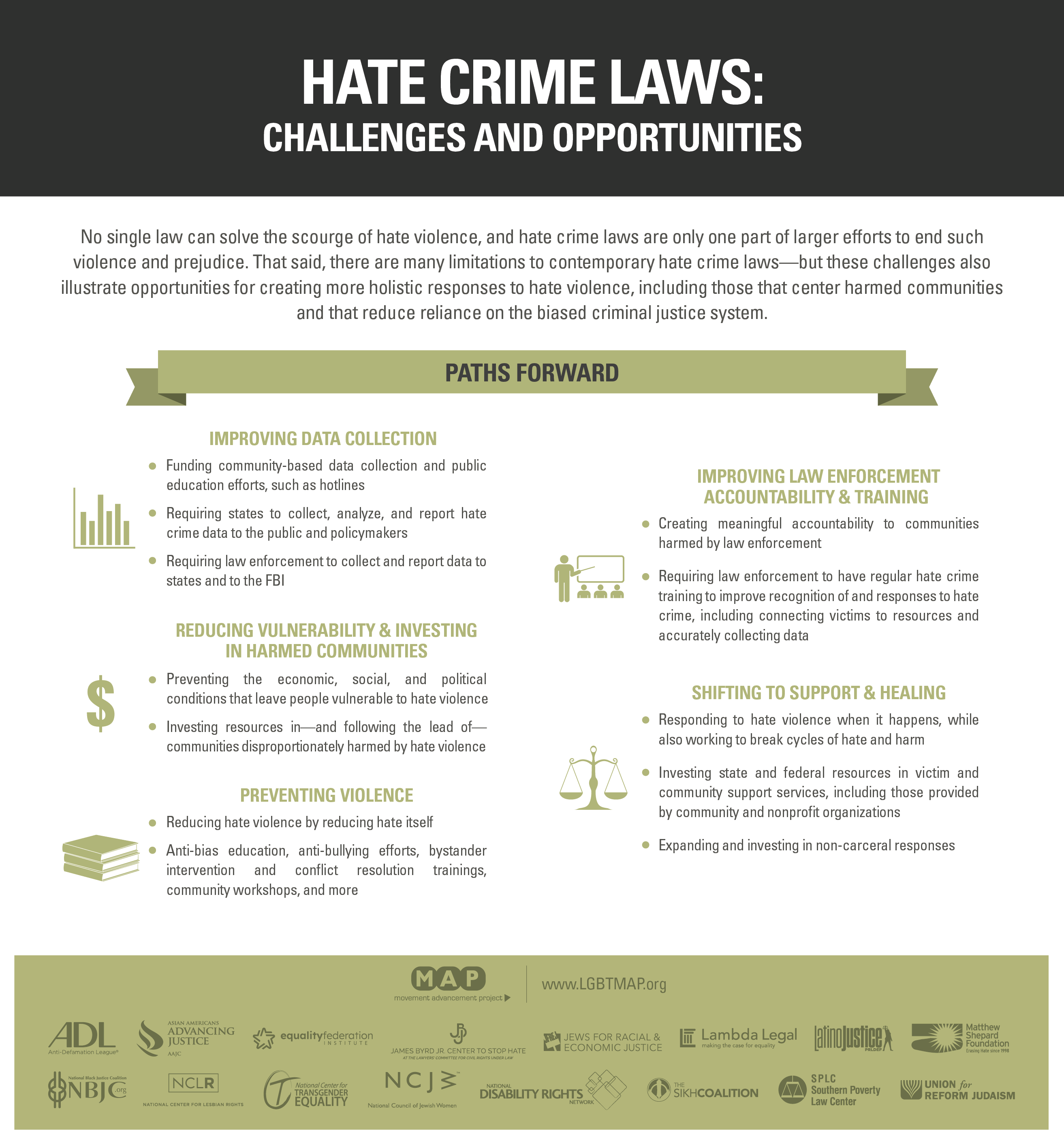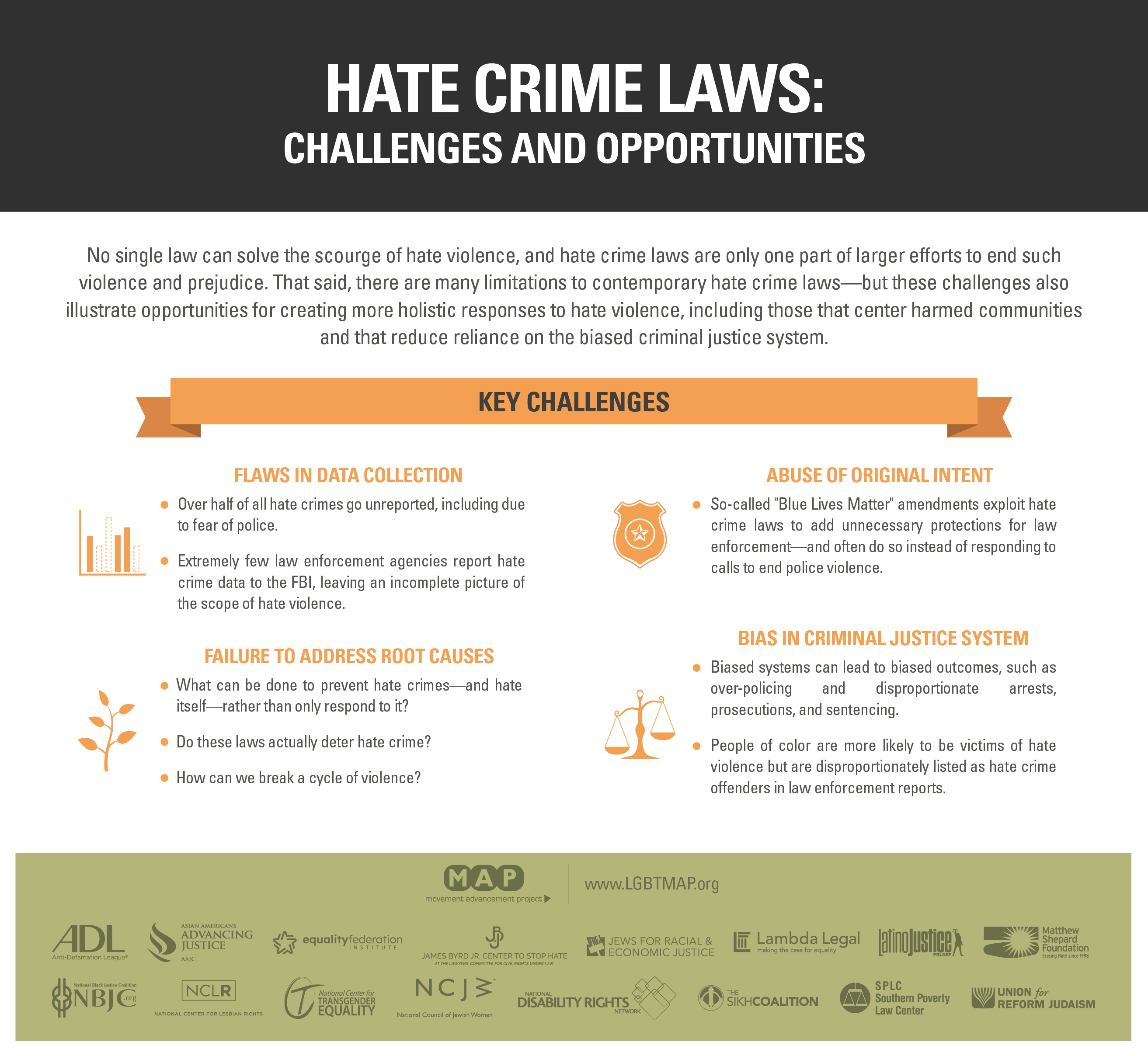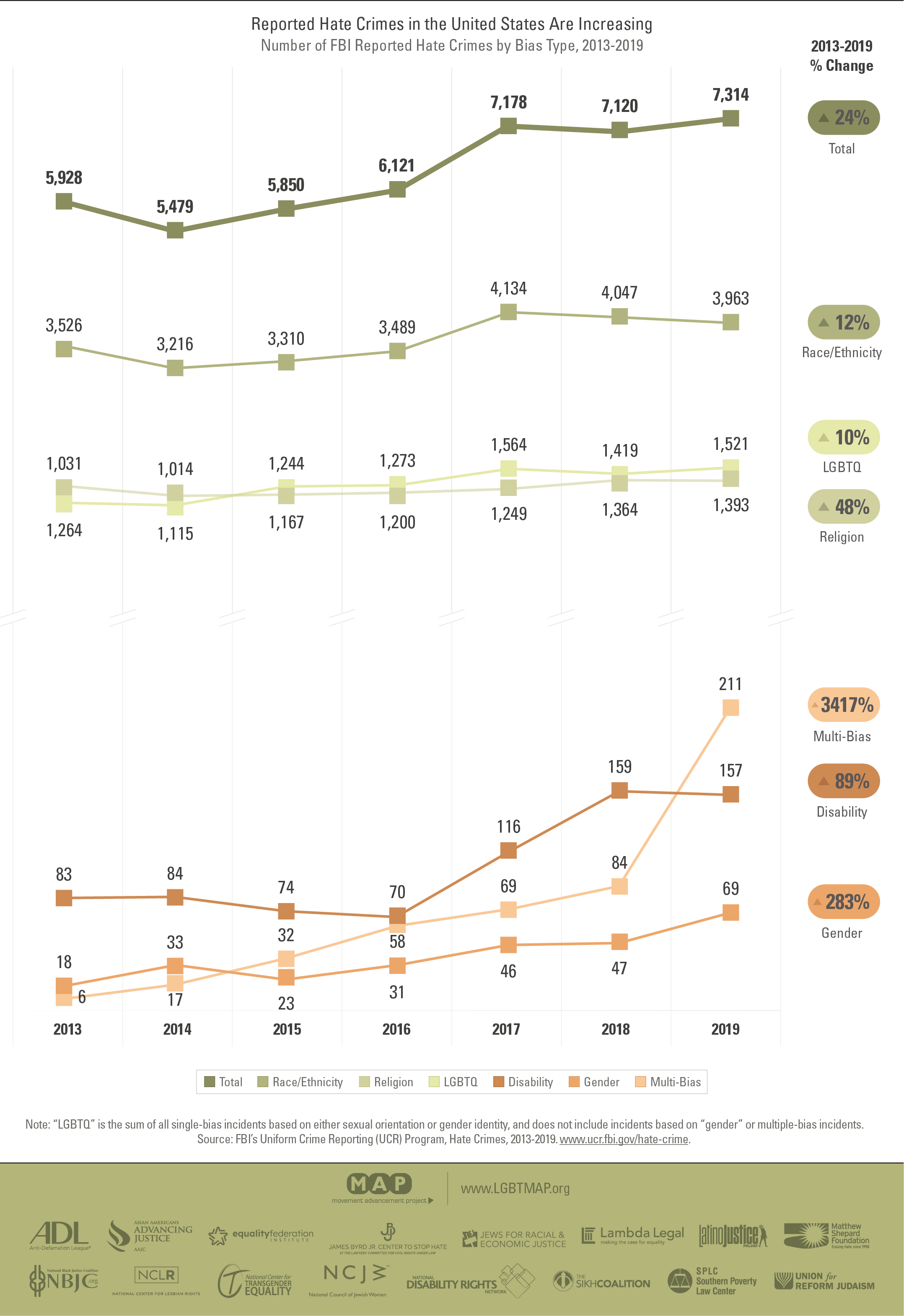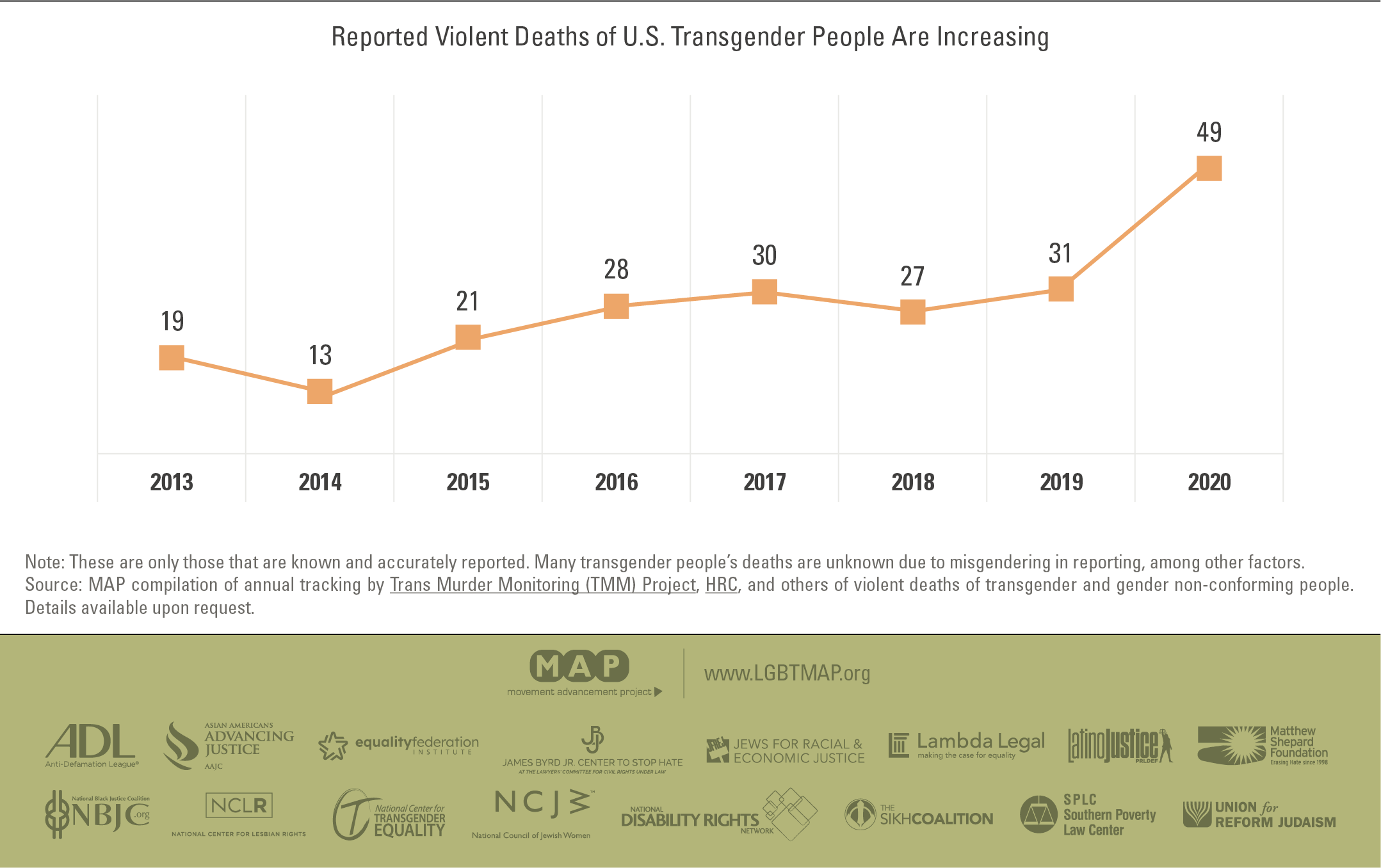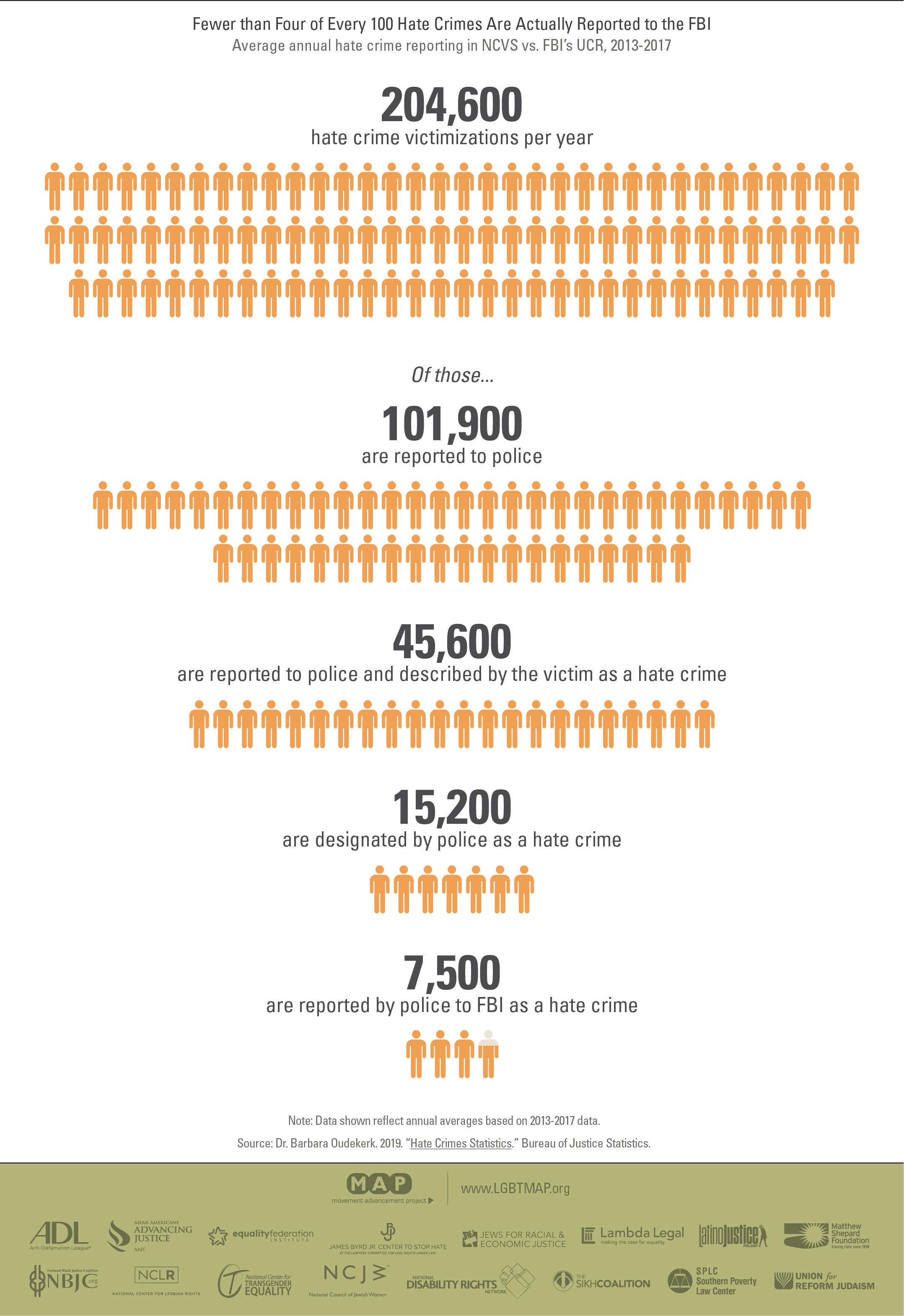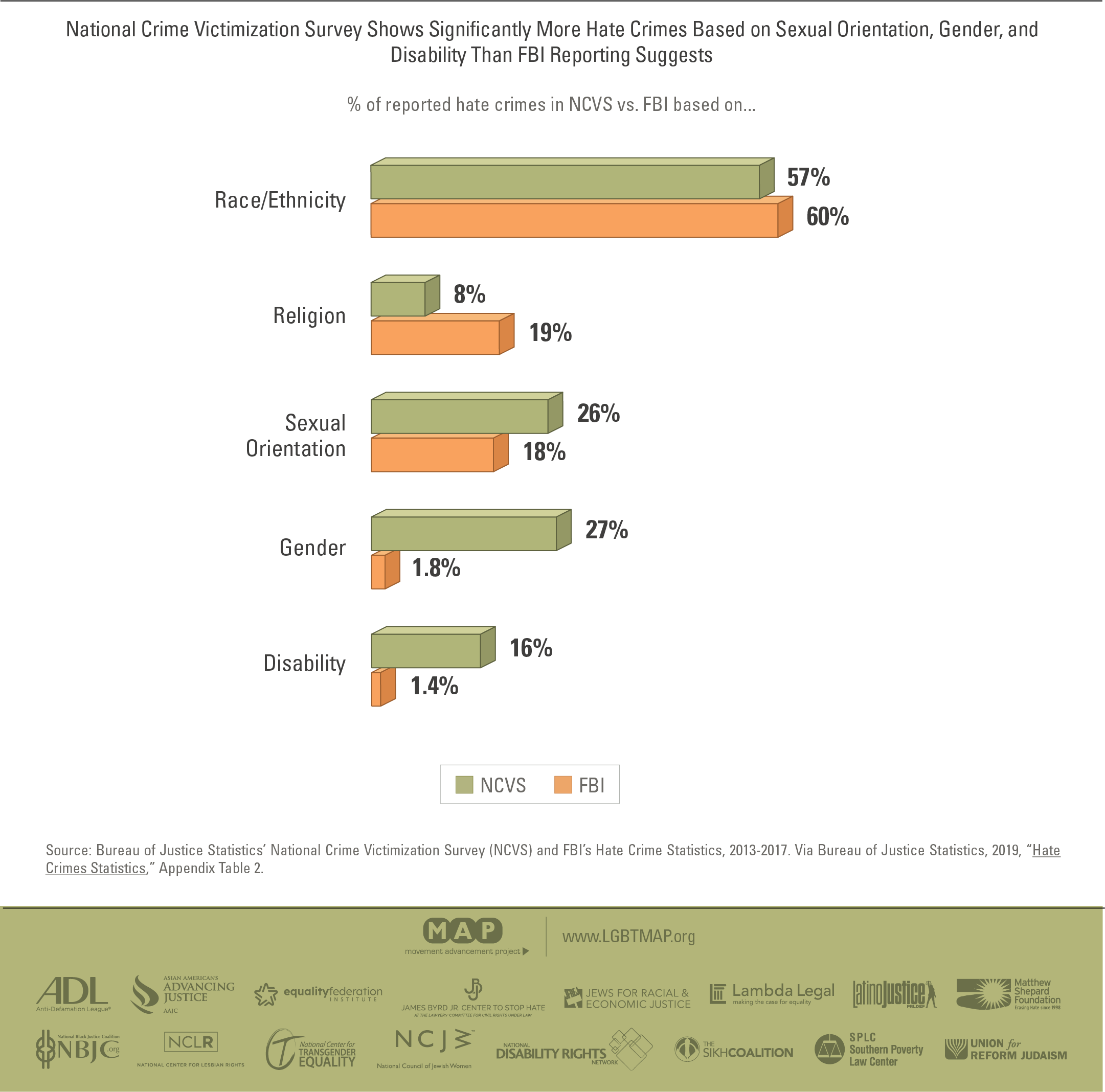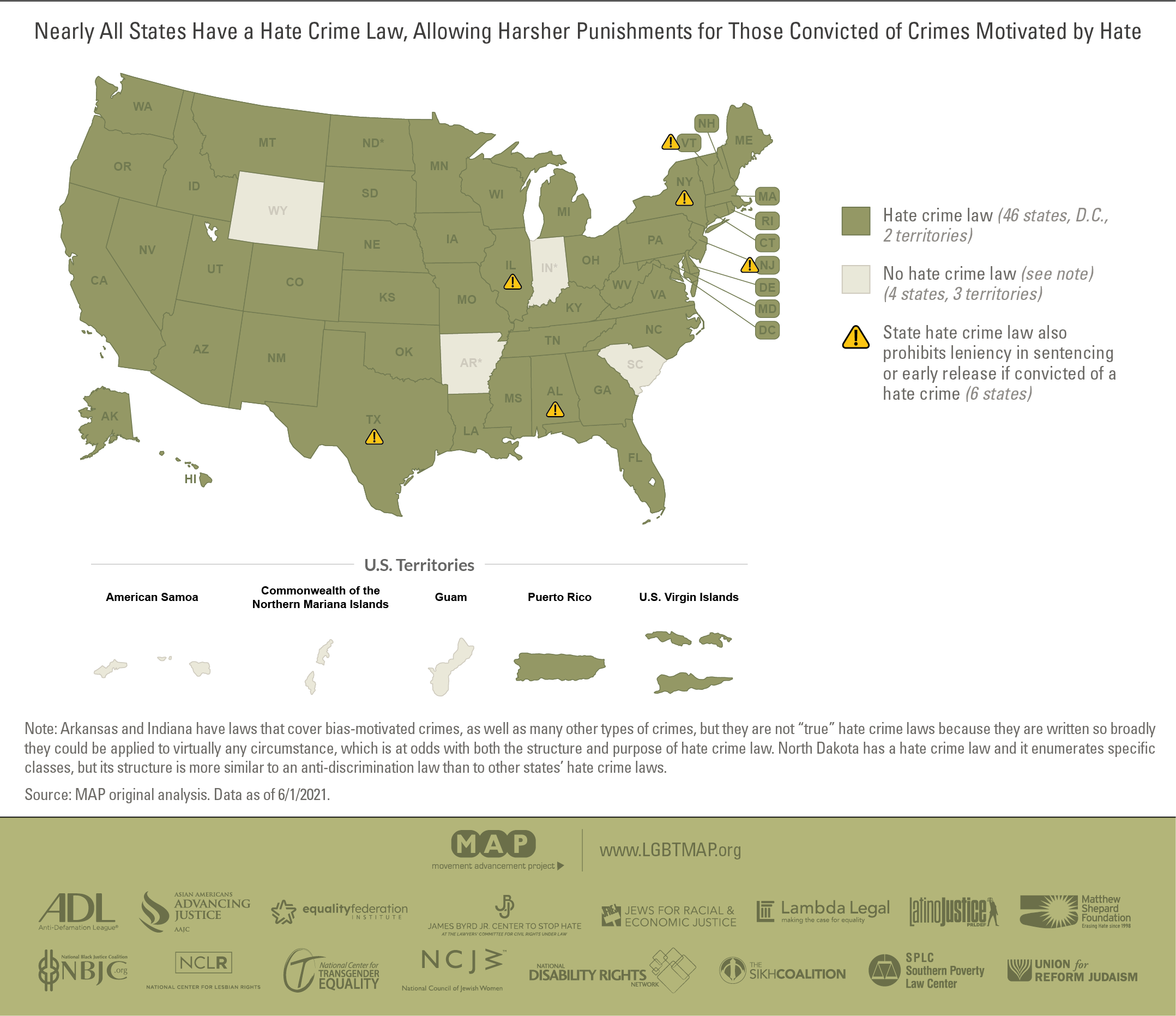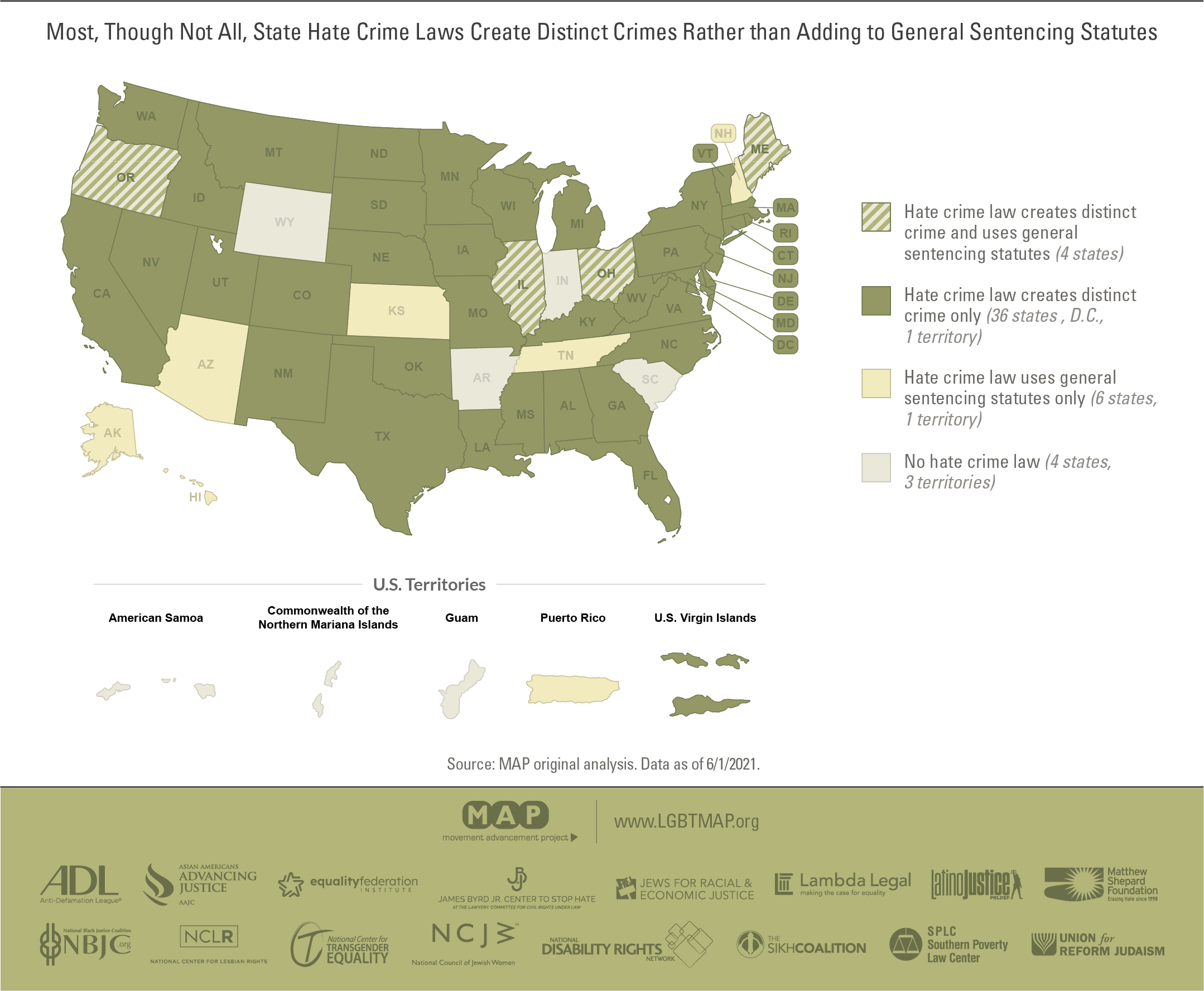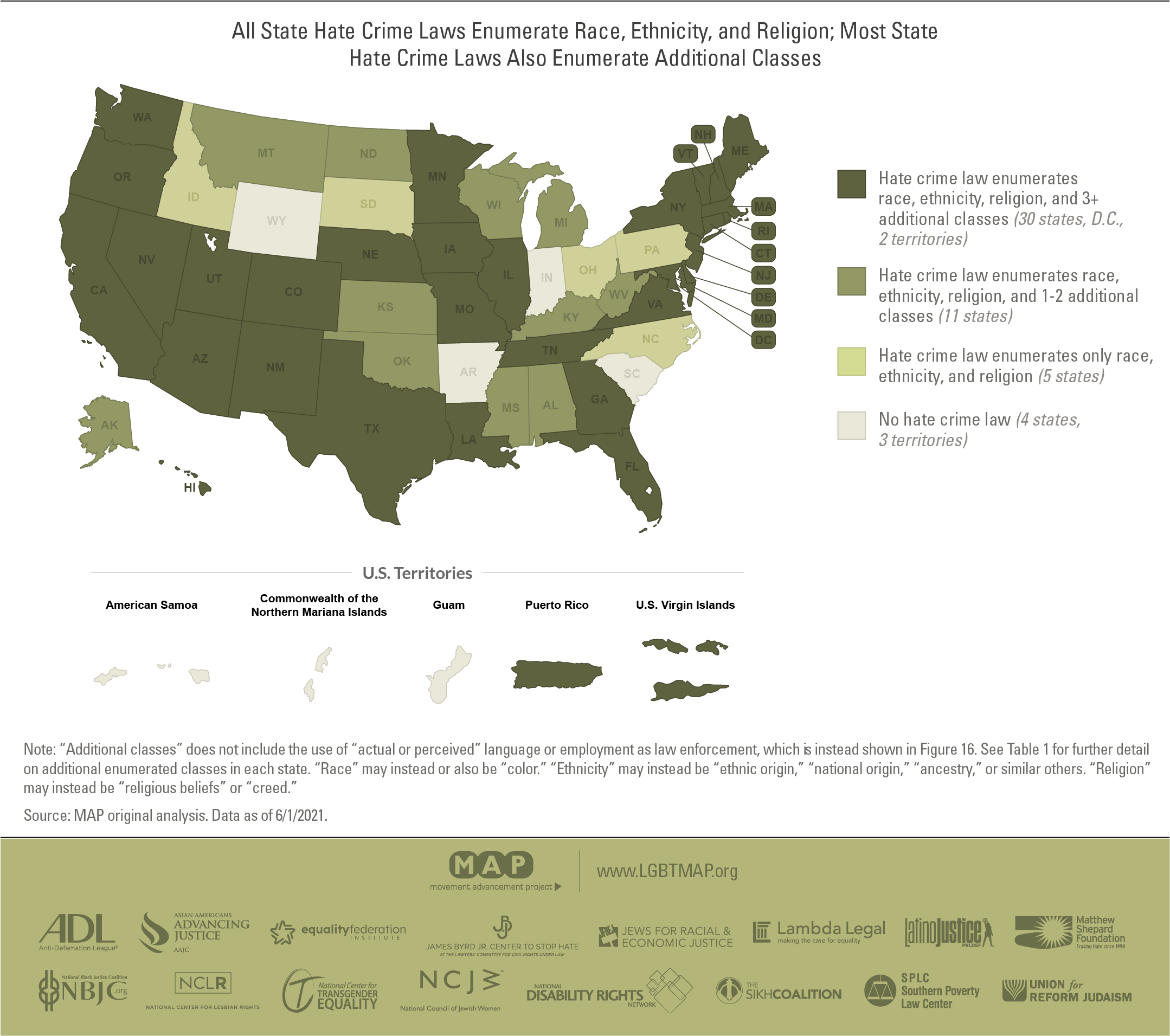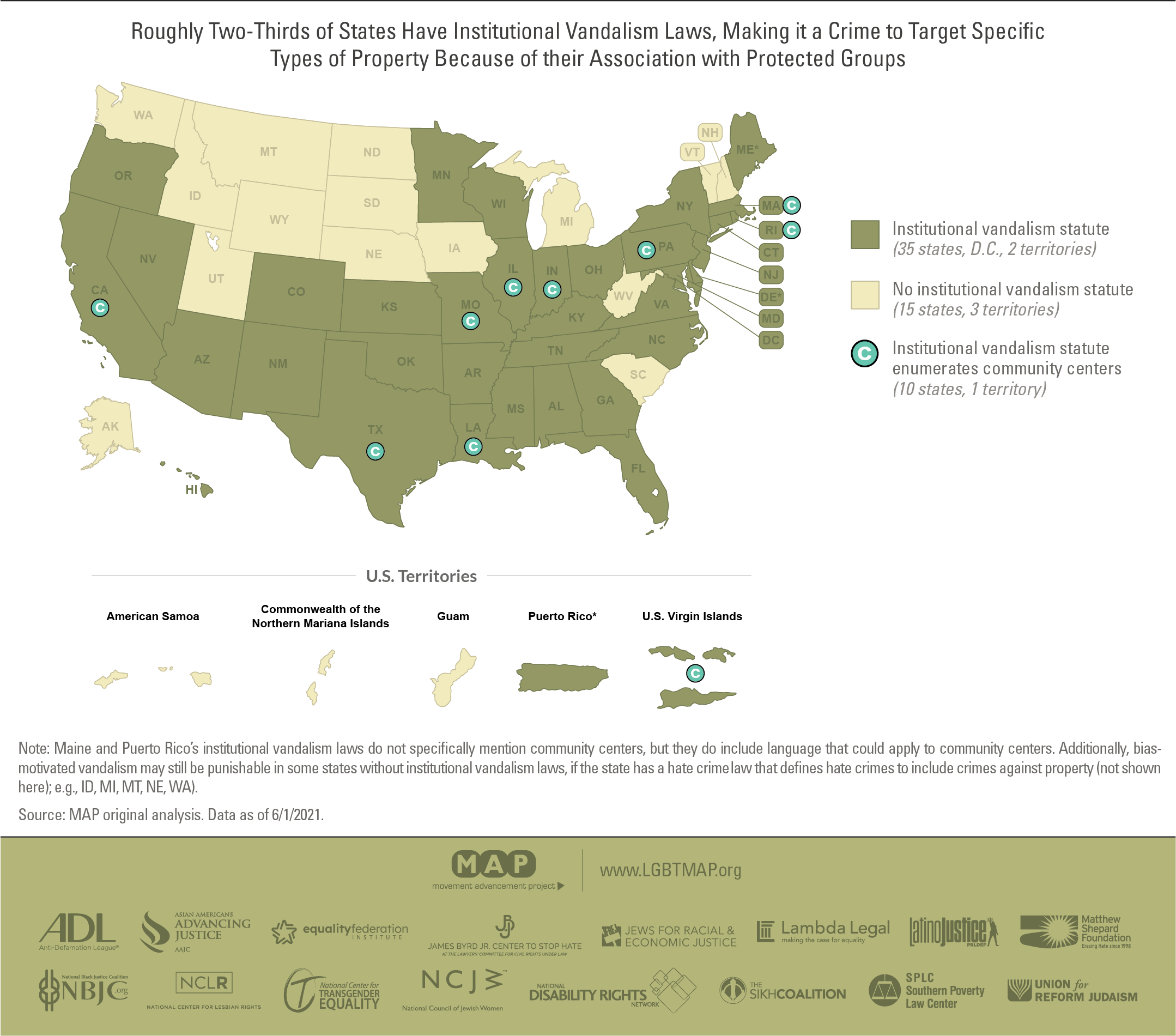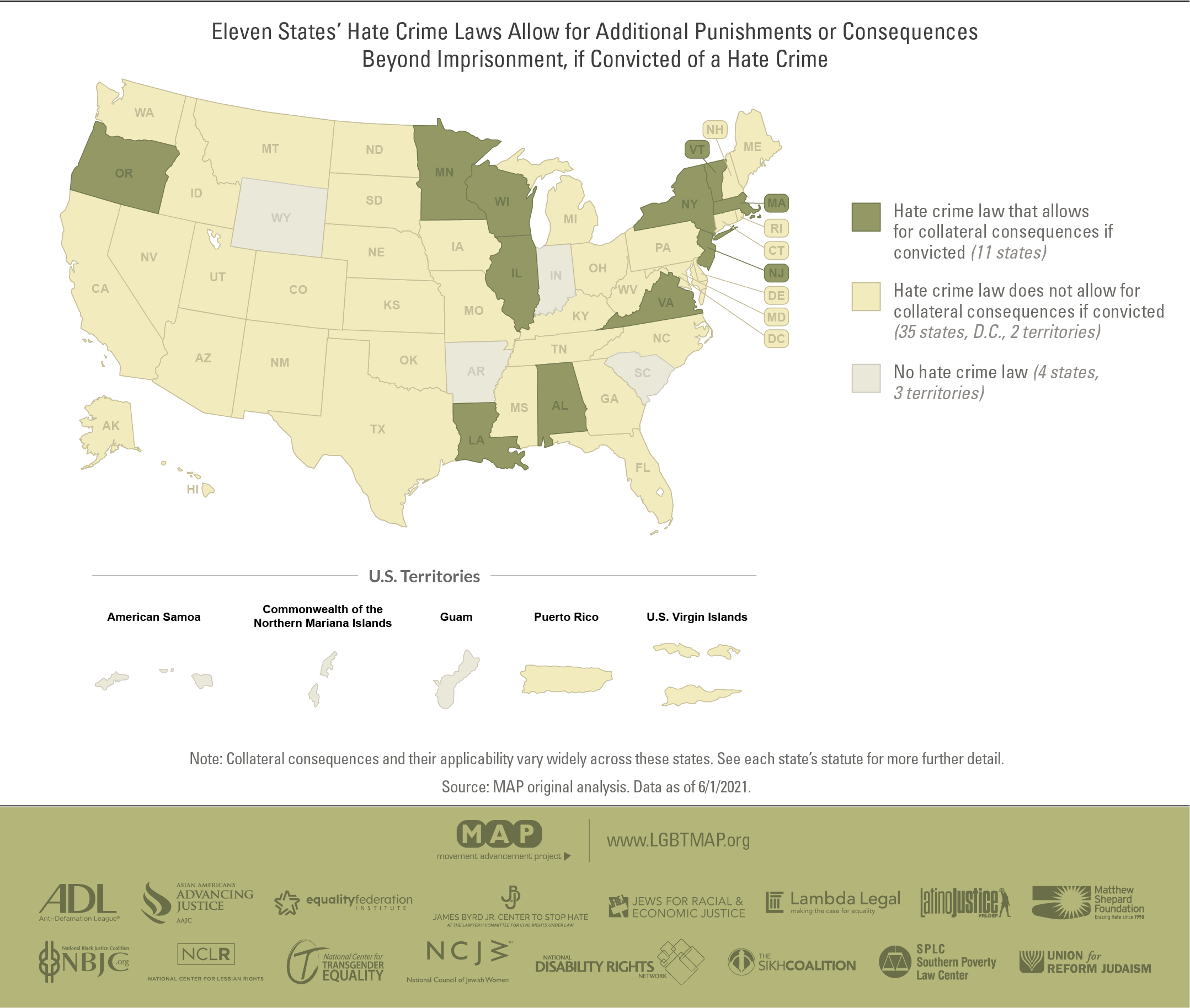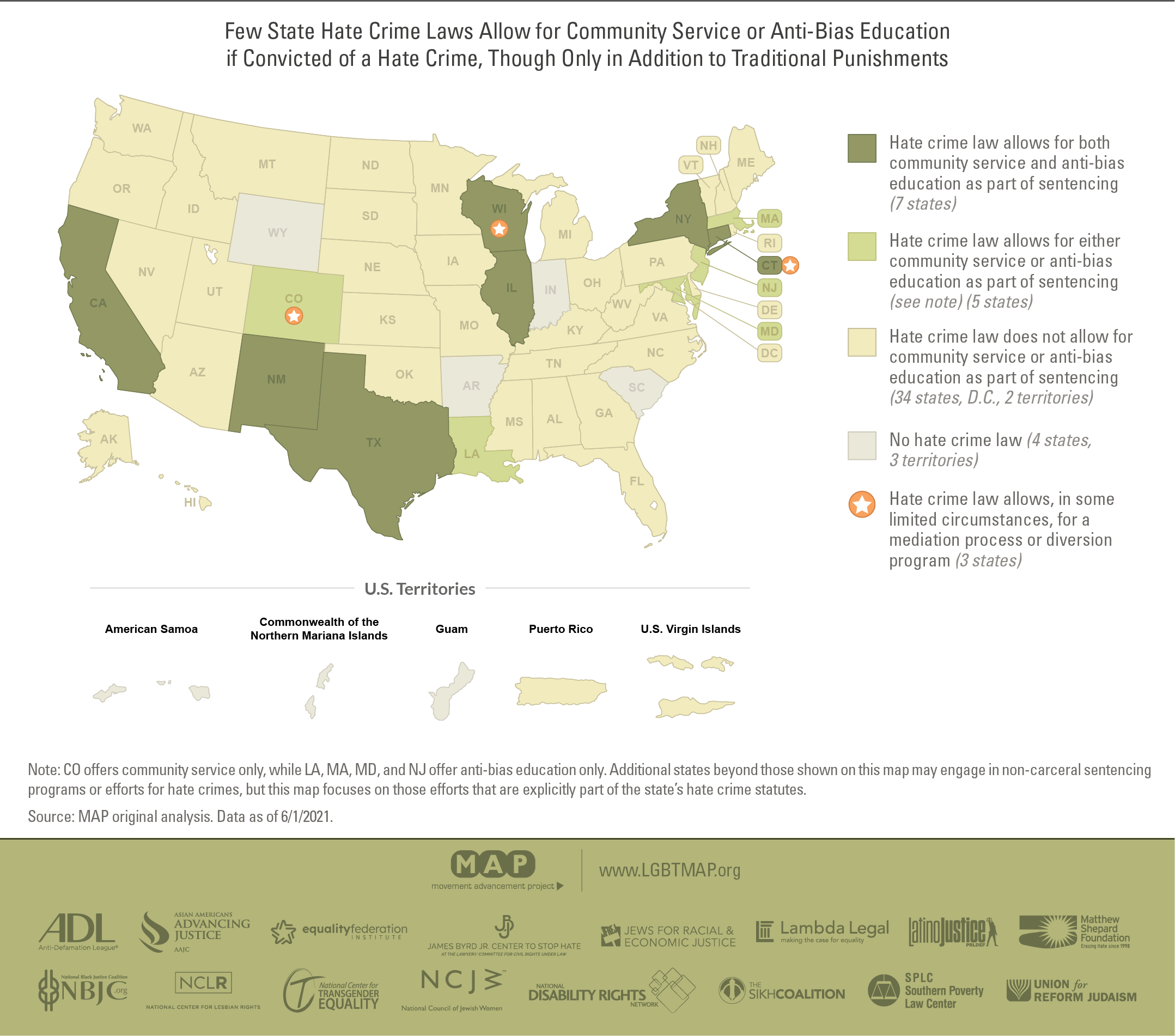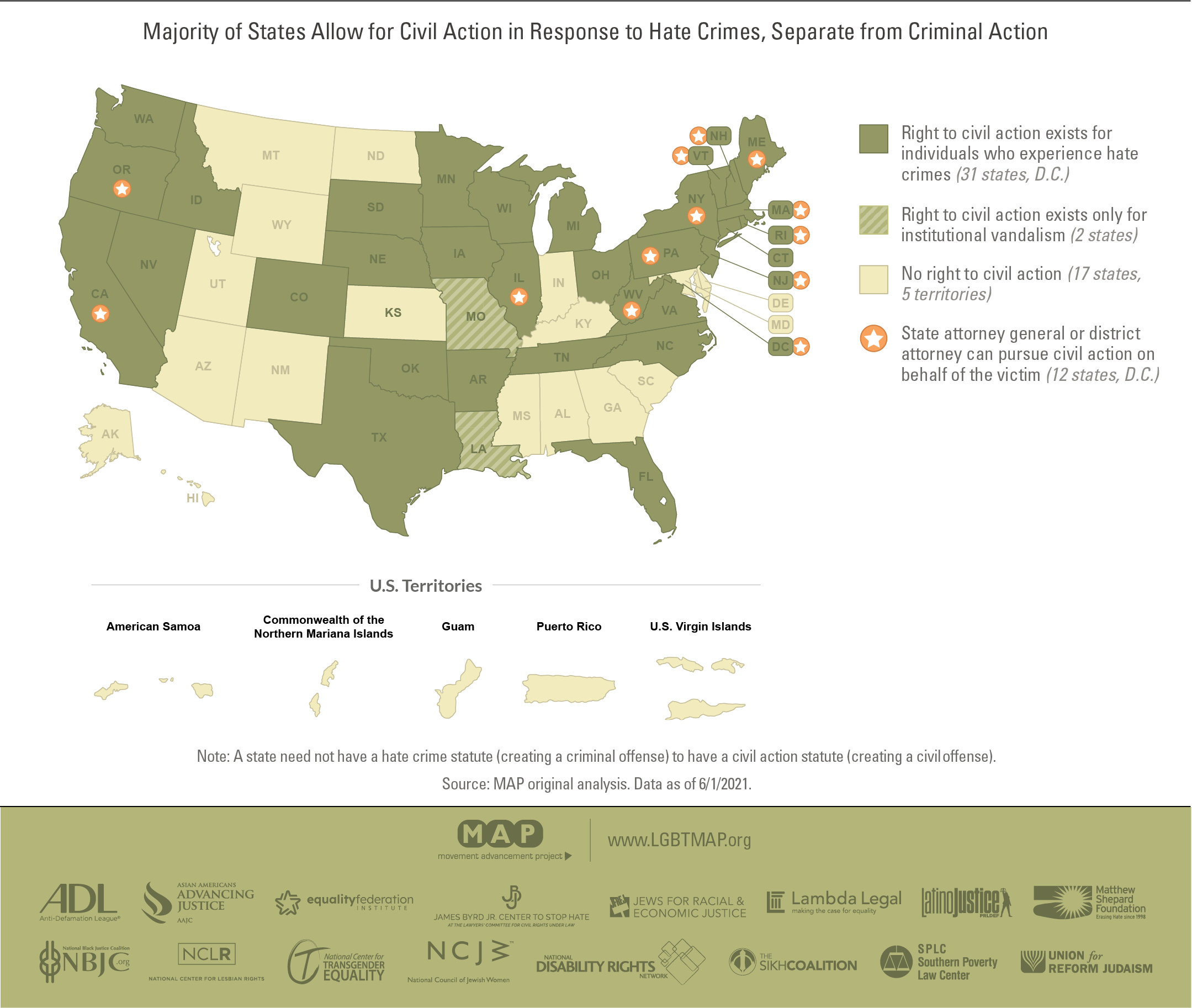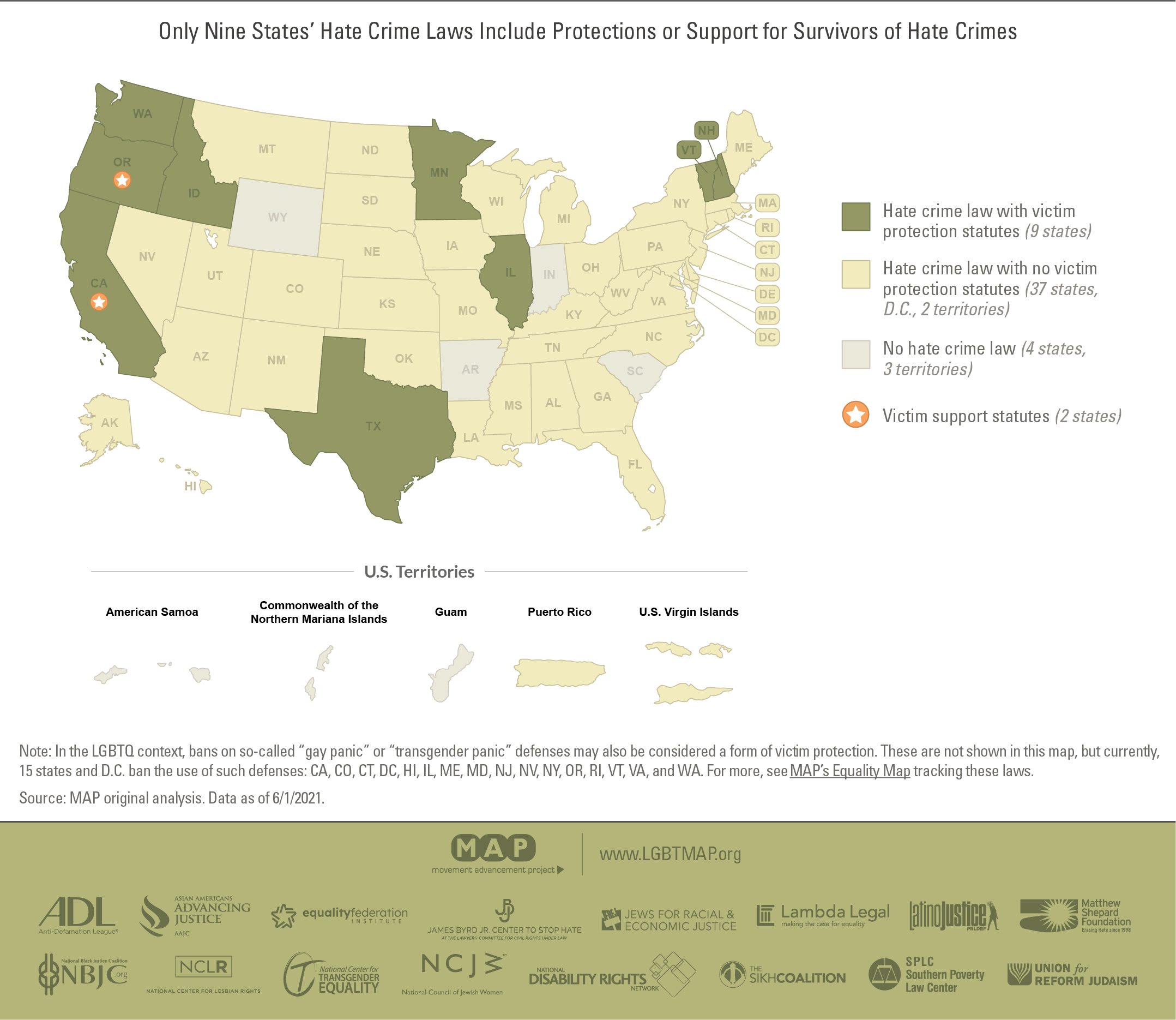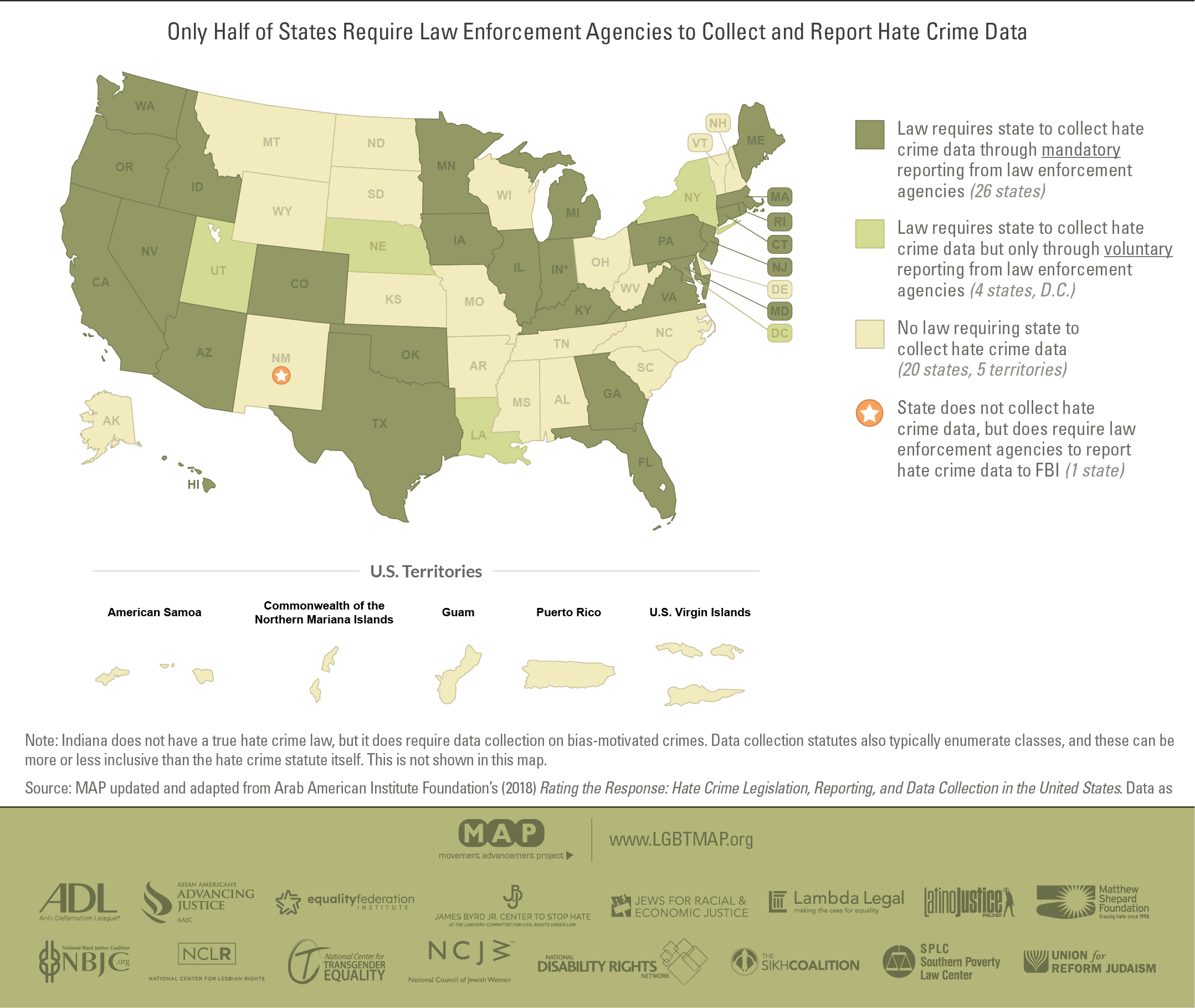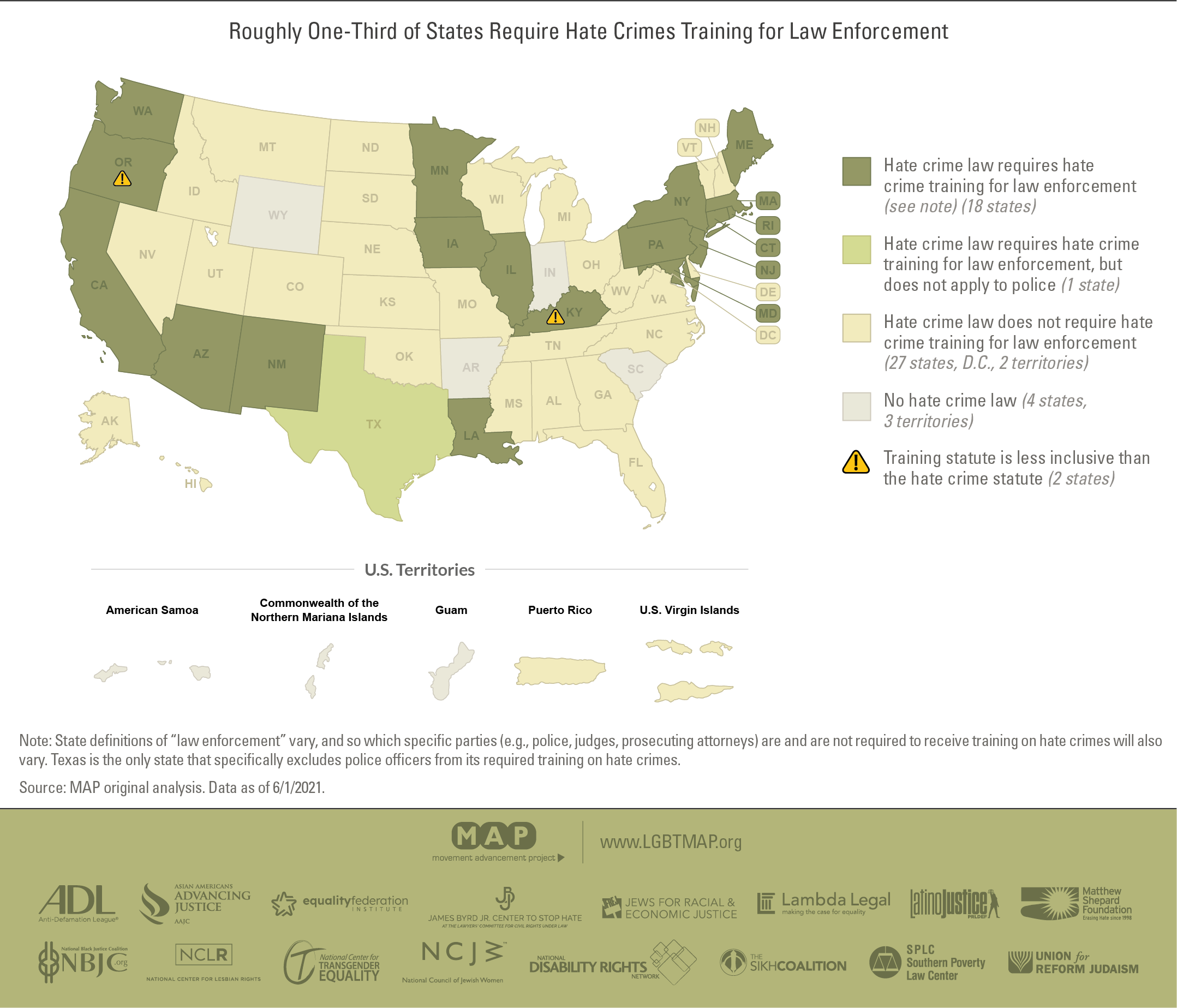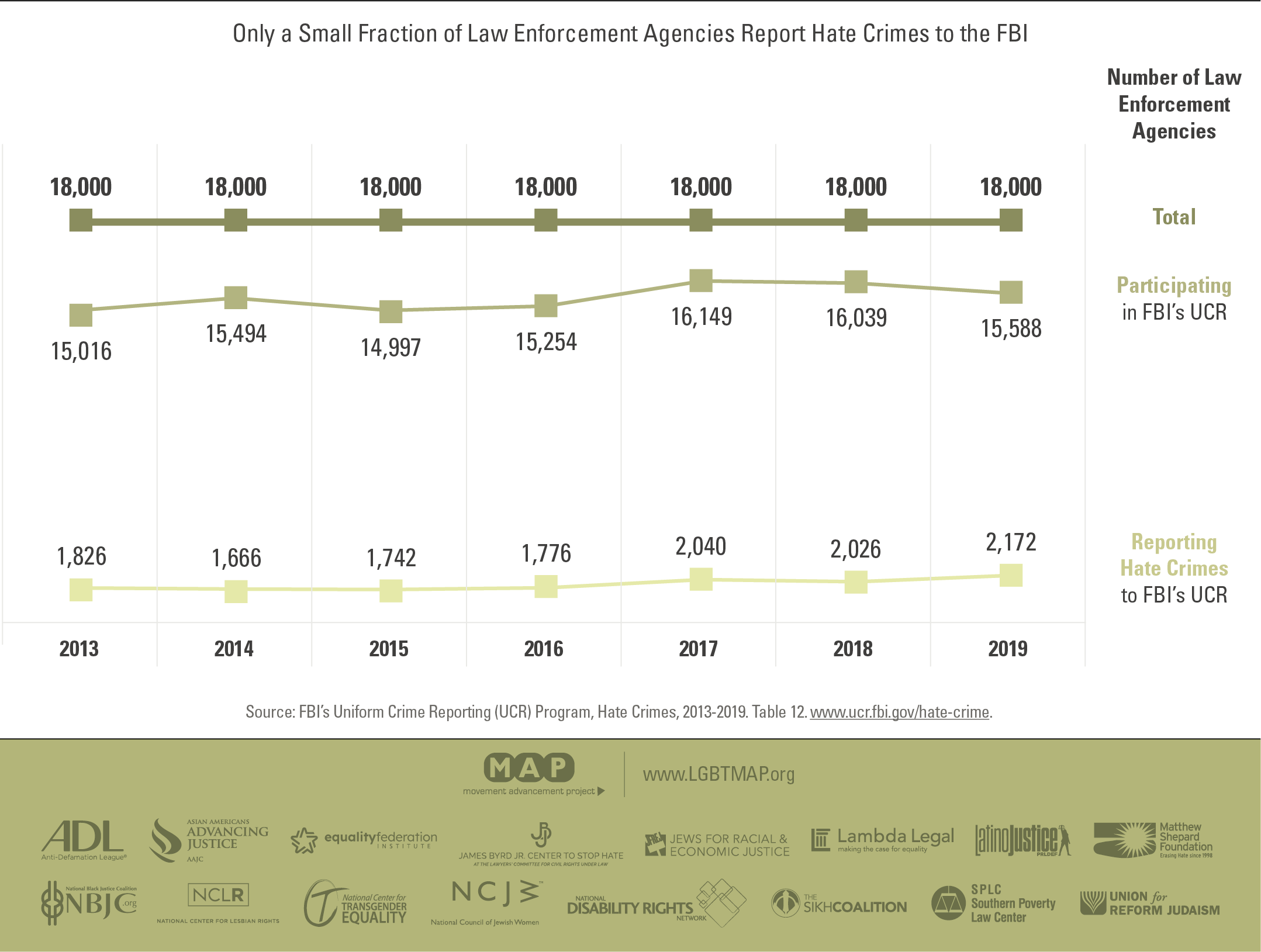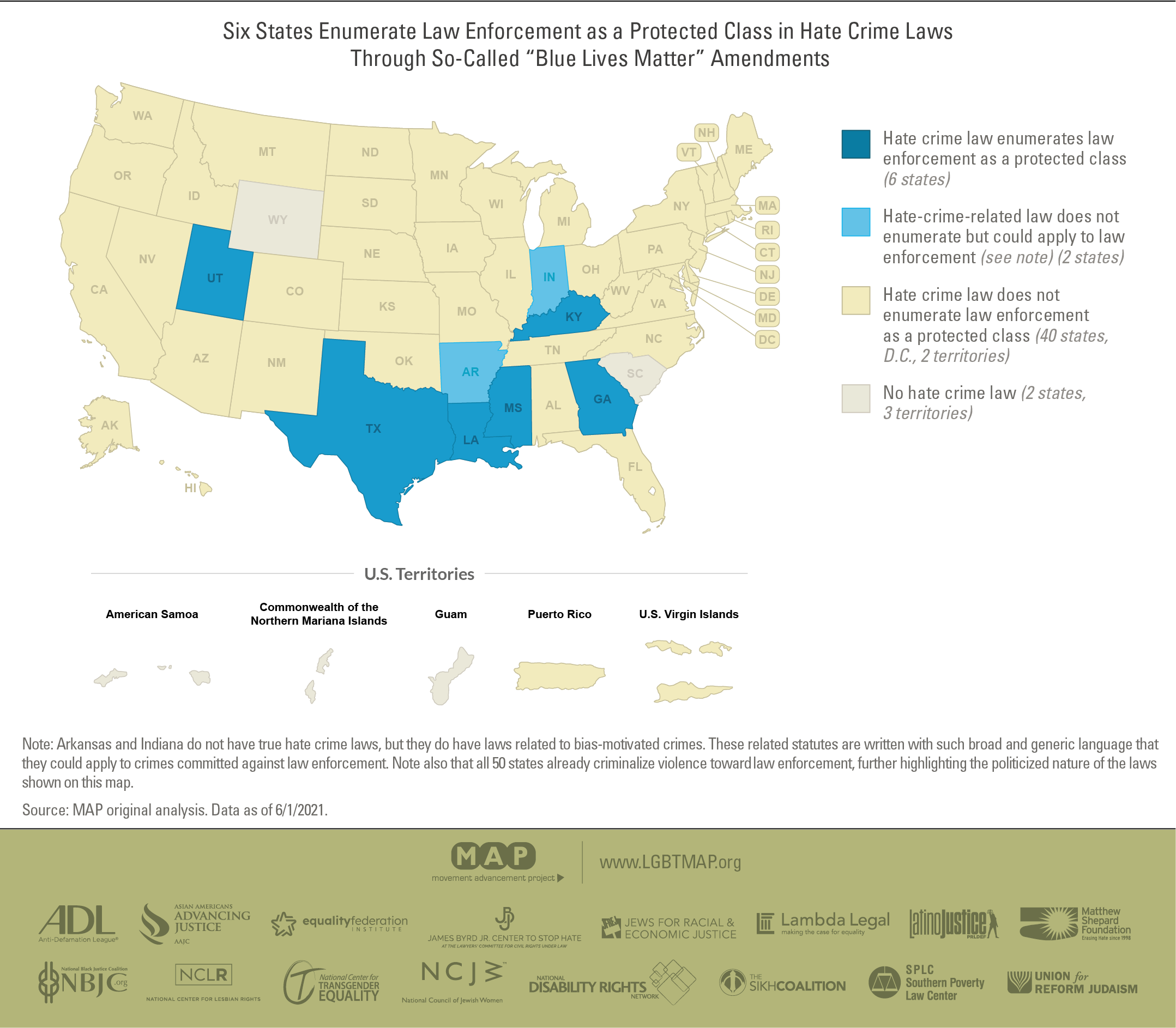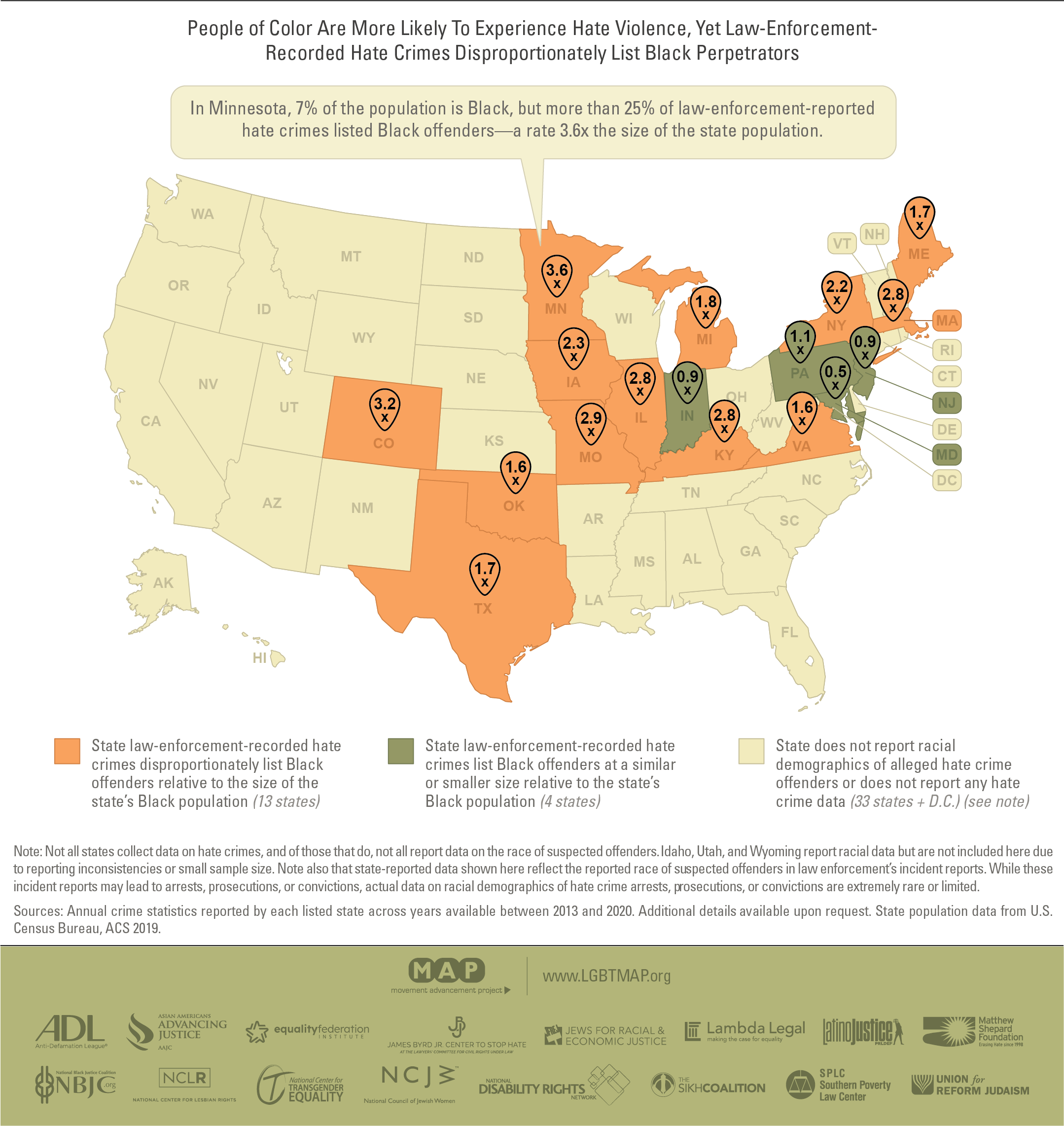The following infographics are drawn from the report
Policy Spotlight: Hate Crime Laws, authored by the Movement Advancement Project (MAP).
The report was released in partnership with: the Anti-Defamation League, Asian Americans Advancing Justice, Equality Federation, James Byrd Jr. Center to Stop Hate at the Lawyers’ Committee for Civil Rights Under Law, Jews for Racial & Economic Justice, Lambda Legal, LatinoJustice PRLDEF, Matthew Shepard Foundation, National Black Justice Coalition, National Center for Lesbian Rights, National Center for Transgender Equality, National Council of Jewish Women, National Disability Rights Network, Sikh Coalition, Southern Poverty Law Center, and the Union for Reform Judaism.

